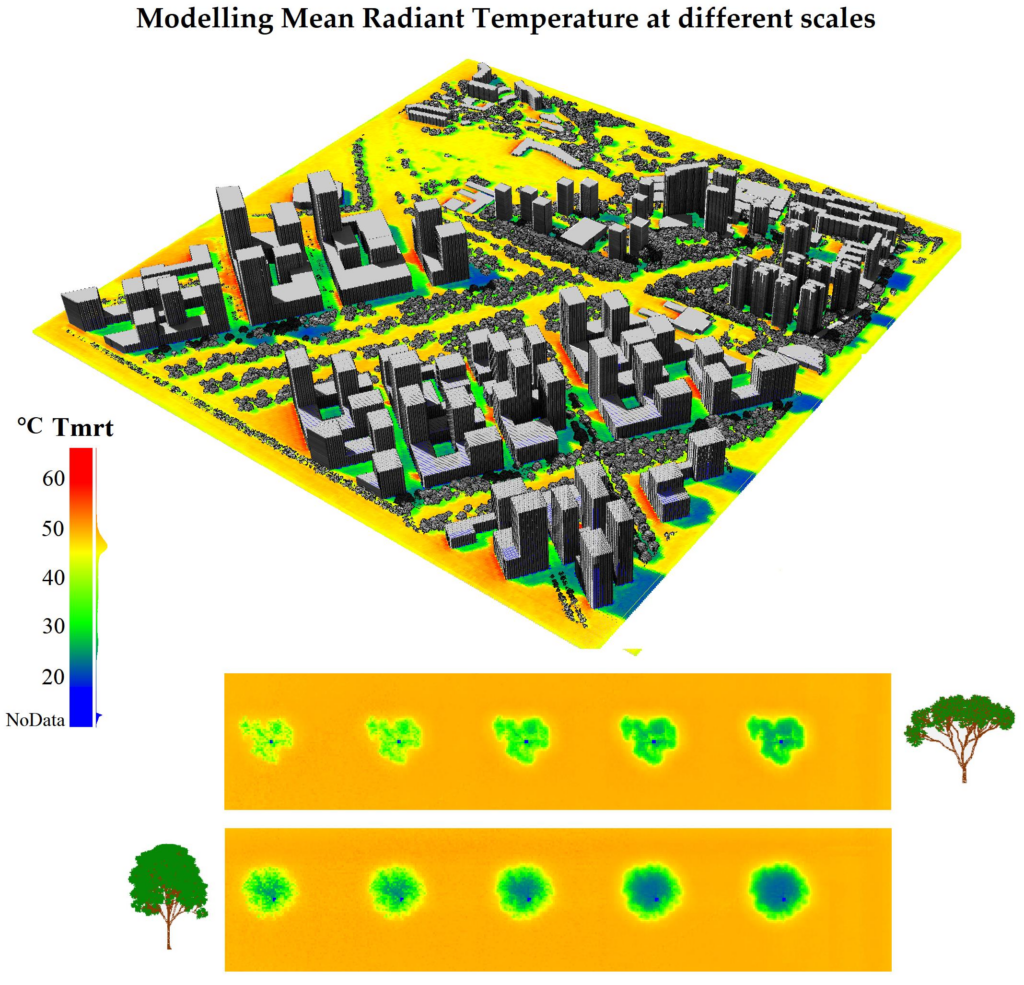
ESSIC Visiting Assistant Research Scientist Tiangang Yin is a co-author on a recent article in Remote Sensing titled “Modeling Mean Radiant Temperature Distribution in Urban Landscapes Using DART”.
The article discusses Mean Radiant Temperature (Tmrt), a parameter of human thermal comfort that quantifies effective radiative flux reaching the body. Tmrt can have a significant impact on human beings. The researchers used the 3-D Discrete Anisotropic Radiation Transfer model (DART) to simulate Tmrt at different scales and under a range of parameters including urban pattern, surface material of ground, walls, roofs, and properties of the vegetation. They tested the new method in Singapore, a tropical city experiencing strong Urban Heat Island effect (UHI) and seeking to enhance the outdoor thermal comfort, and found good agreement between DART-modelled and field-estimated Tmrt.
The use of a 3-D radiative transfer model like DART shows promising capability to study urban microclimate and outdoor thermal comfort with increasing landscape details, and to build linkage to remote sensing data. This methodology could potentially contribute towards optimizing climate-sensitive urban design when combined with the appropriate tools.
To access the article, click here: “Modeling Mean Radiant Temperature Distribution in Urban Landscapes Using DART”.





